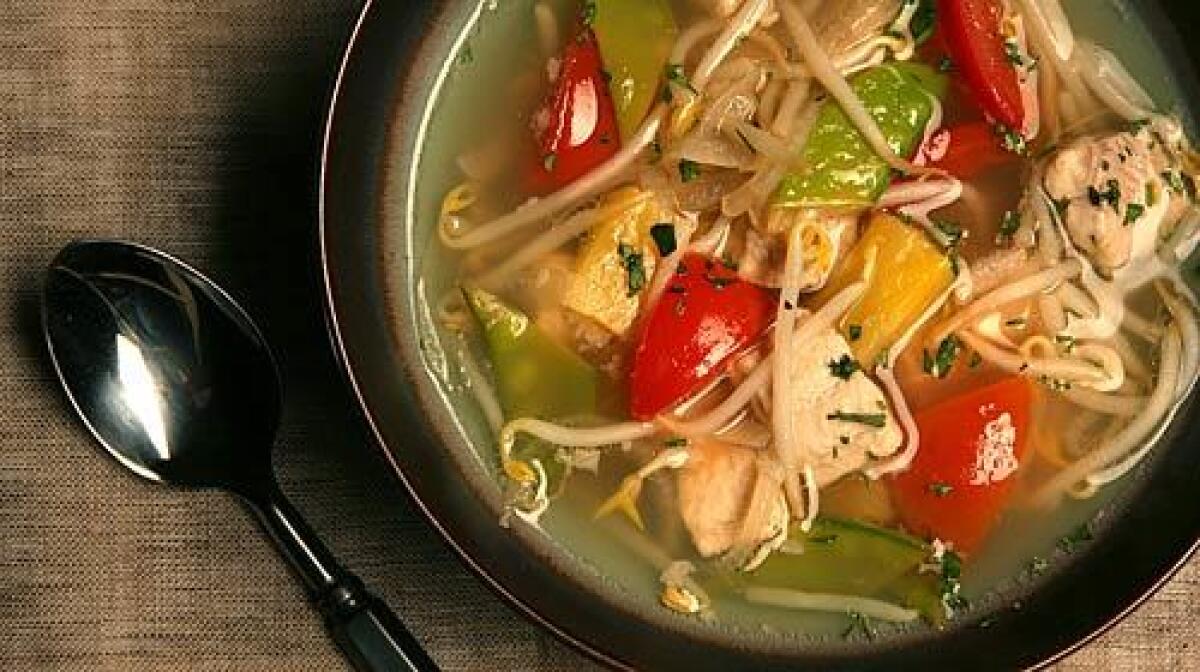This way to tamarind tanginess

WALK into almost any taquería and you can get agua de tamarindo, a refreshingly tangy Mexican drink made from tamarind fruit. But tamarind is not just Mexican, and tamarindo is not just a drink.
Wonderfully zingy, tart and piquant, with an intriguing herbal-floral note, the fruit’s flavor shows up in a wide-reaching array of cuisines -- Southeast Asian, Indian, Middle Eastern, Chinese, Eastern and Northern African, and Caribbean. You find it in a sauce spooned over deep-fried fish in Thailand, or with spicy eggplant in India, or in a sour soup in Vietnam. A tamarind-laced, sweet-sour broth might punctuate a rich, meaty Iraqi stew. And yes, you also find it in zippy drinks from Egypt to Jamaica and throughout Latin America.
Claudia Roden makes stunning use of it in her recipe for ingriyi, an Iraqi lamb, eggplant and tomato stew from her cookbook “The Book of Jewish Food.” The meat and vegetables are cooked separately and drizzled with a sauce of tamarind and meat broth before baking. Each bite is a collage of tender lamb, silky eggplant and jammy tomato, brightened by deliciously tamarind-fruity juices.
Poopa Dweck includes no fewer than nine recipes involving tamarind in her book “Aromas of Aleppo: The Legendary Cuisine of Syrian Jews.” Aleppian Jews, she writes, flavor many dishes with tamarind, “a subtler souring agent than lemon, tangier than pomegranate syrup,” with a “deeper flavor than tomato.” It shows up in meatball dishes, mincemeat pies and bulgur salad.
Popular across Southeast Asia are tamarind-spiked “sour soups.” In “Into the Vietnamese Kitchen,” Andrea Nguyen offers one that gains substance from lightly poached catfish; okra lends body, and barely cooked bean sprouts add crunch.
You might think the best way to tamarind flavor is to use the pods themselves. Not so. Long, brittle pods of mature tamarind encase a dark, sticky, fruit that’s veined with thick fibers and studded with seeds. You can buy the pods in Mexican markets, but shelling them and removing the fibers and seeds is messy and difficult. Then there’s young tamarind -- which might sound delicate and tender, but its pale green flesh is lip-puckeringly acidic. It’s used in some Thai dishes, but it’s not as common an ingredient as the ripe fruit.
The most convenient and effective way to cook with tamarind is to make what’s known as “tamarind liquid.” (In their books, Dweck and Nguyen include sections on how to make it.) You make the liquid using tamarind paste or pulp, which is the most widely available form of tamarind, sold at Asian and Indian markets. It comes in the form of a brick of seedless pulp, often labeled simply “tamarind.” Wrapped in cellophane, the blocks keep indefinitely without refrigeration. Simmer the pulp in water, then let it sit for a while before passing it through a sieve to eliminate all the fiber. Freeze it in ice-cube trays for future use, or use it right away.
Pre-processed tamarind pulp is a bit easier to manage, but it’s a challenge to find. One reliable Thai product is labeled “Pure Fresh Tamarind (Concentrate),” and despite its name can be used straight out of the jar without dilution. It’s comparable to the soaked and sieved pulp. But beware a dark, viscous fluid labeled “Tamarind concentrate” found in Indian stores. It tastes flat and metallic, with none of the fruity aroma of the other types of tamarind.
A tart touch
ONCE you have a stash of tamarind liquid, you may find yourself adding it to anything that needs a tart touch. It makes a great salad dressing with nut or olive oil and can sub for lemon juice or vinegar in a marinade. I’ve even tried it in lemon bars (instead of lemon juice), with much success.
Ethiopian-born chef Marcus Samuelsson knows exactly how to work the flavor. In his African-inspired “The Soul of a New Cuisine,” he uses it to heighten a mustardy sauce for salmon kebabs. The tamarind zips through the rich, charred salmon to wonderful effect.
Who knew that your agua de tamarindo would be the beginning of a trip around the world?
More to Read
Sign up for The Wild
We’ll help you find the best places to hike, bike and run, as well as the perfect silent spots for meditation and yoga.
You may occasionally receive promotional content from the Los Angeles Times.









